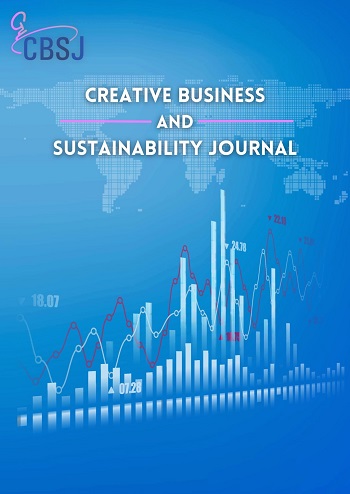Optimizing Emergency Medical Services: Cost Reduction and Service Efficiency
Main Article Content
Abstract
This research aims to reduce costs by enhancing emergency medical services (EMS). The study analyzed data from 1,736 accident sites to develop a model that can improve EMS routing and identify overlapping service zones. This approach resulted in a 37.88% reduction in average operational costs. The accuracy and reliability of the system were validated using the Analytic Hierarchy Process (AHP). The pairwise comparisons resulted in a Consistency Ratio (CR) of 0.09323, with an eigenvalue (𝜆𝑚𝑎𝑥) of 4.25172 and a consistency index (𝐶𝐼) of 0.08391. This validation confirms the model's effectiveness in optimizing EMS operations, which is crucial in life-saving scenarios. It also highlights the potential to streamline response times and reduce costs, providing invaluable insights for the advancement of emergency medical logistics.
Article Details

This work is licensed under a Creative Commons Attribution-NonCommercial-NoDerivatives 4.0 International License.
Opinions and discussions in papers published by the Creative Business and Sustainability Journal (CBSJ) are deemed as personal opinions and the responsibility of the writers. They are not the opinions or responsibility of the Chulalongkorn Business School of Chulalongkorn University.
Papers, content, information etc. appearing in the Journal are deemed to be the copyright property of the Chulalongkorn Business School of Chulalongkorn University. Anybody or any organization that wishes to publish any part of them or use them in any way must obtain written permission from the Chulalongkorn Business School, Chulalongkorn University.
References
Adarang, H., Bozorgi-Amiri, A., Khalili-Damghani, K., & Tavakkoli-Moghaddam, R. (2020). A robust bi-objective location-routing model for providing emergency medical services. Journal of Humanitarian Logistics and Supply Chain Management, 10(3), 285-319.
Chaopanitcharoen, S., & Opasanon, S. (2019). Development of performance indicatiors for assessing industry 4.0 readiness of first tier auto-part enterprises in thailand. Creative Business and Sustainability Journal, 41(3), 1 - 40.
Dorian, D., Tilk, C., Irnich, S., Lehuédé, F., & Péton, O. (2021). Hybridizing large neighbourhood search and exact methods for generalized vehicle routing problems with time windows. EURO Journal on Transportation and Logistics, 10(1), Article 100040. https://doi.org/10.1016/j.ejtl.2021.100040
Janlawong, N. (2016). Location Determination of Emergency Medical Service Facilities Using Maximum Patient Survival Rate Problem Model. Pages 10-80.
Jittamai, P., Chanlawong, N., Boonyanusith, W., & Meechaiyo, S. (2019). Efficiency assessment model development of emergency medical service systems: Case study of Nakhon Ratchasima province. Journal of Professional Routine to Research, 6(1), 27-36.
Laksono, P., Wulan, S. R., Supangkat, S. H., & Sunindyo, W. D. (2017, September 18-19). AHP and dynamic shortest path algorithm to improve optimum ambulance dispatch in emergency medical response. In 2017 International Conference on ICT for Smart Society (ICISS). IEEE. https://dx.doi.org/10.1109/ICTSS.2017.8288879
Leonidas, I. D., Dukakis, A., Tan, B., & Angelakis, D. G. (2023). Qubit Efficient Quantum algorithms for the vehicle routing problem on NISQ processors. https://doi.org/10.1002/qute.202300309
McArthur, D. P., Gregersen, F. A., & Hagen, T. P. (2014). Modelling the cost of providing ambulance services. Journal of Transport Geography, 34(1), 175-184.
Michael, D., April., Brian, Patrick, Murray. (2017). Cost-effectiveness analysis appraisal and application: An emergency medicine perspective. Academic Emergency Medicine, 24(6), 757-788. https://doi.org/10.1111/ACEM.13186
Moslem, S. A., Saraji, M. K., Mardani, A., Alkharabsheh, A., Duleba, S., Esztergár-Kiss, D. (2023). A systematic review of analytic hierarchy process applications to solve transportation problems: From 2003 to 2022. IEEE Access, 11, 11973-11990. https://doi.org/10.1109/access.2023.3234298
Road Safety Thailand. (2018). Thailand road safety master plan 2018 – 2021. http://www. roadsafety.disaster.go.th/in.roadsafety-1.196
Srivastava, G., Singh, A., & Mallipeddi, R. (2021). NSGA-II with objective-specific variation operators for multi objective vehicle routing problems with time windows. Expert Systems with Applications, 176(1), 114-779.
Su, Q., Luo, Q., & Huang, S. H. (2015). Cost-effective analyses for emergency medical services deployment: A case study in Shanghai. International Journal of Production Economics, 163, 112-123. https://doi.org/10.1016/j.ijpe.2015.02.015
ThaiRsc. (2020). Road accident statistics. https://www.thairsc.com/data-compare
Ubon Ratchathani Provincial Health Administration Office. (2021). Road accident situation report of Ubon Ratchathani province Year 2020. Ubon Ratchathani, Thailand.
Villalba, A., & Rotta, E. C. G. L. (2022). Clustering and heuristics algorithm for the vehicle routing problem with time windows. International Journal of Industrial Engineering Computations, 13(2), 165-184.
World Health Organization. (2021). Global status report on road safety. https://www.who.int/health
Yang, W., Su, Q., Huang, S. H., Wang, Q., Zhu, Y., & Zhou, M. (2019). Simulation modelling and optimization for ambulance allocation considering spatiotemporal stochastic demand. Journal of Management Science and Engineering, 4(4), 252-265.
Yoon, S., & Albert, L. A. (2020). A dynamic ambulance routing model with multiple responses. Transportation Research Part E: Logistics and Transportation Review, 133(1), 1001807.
Zhang, W., Yang, D., Zhang, G., & Gen, M. (2020). Hybrid multi objective evolutionary algorithm with fast sampling strategy-based global search and route sequence difference-based local search for VRPTW. Expert Systems with Applications, 145(1), 113-151.


